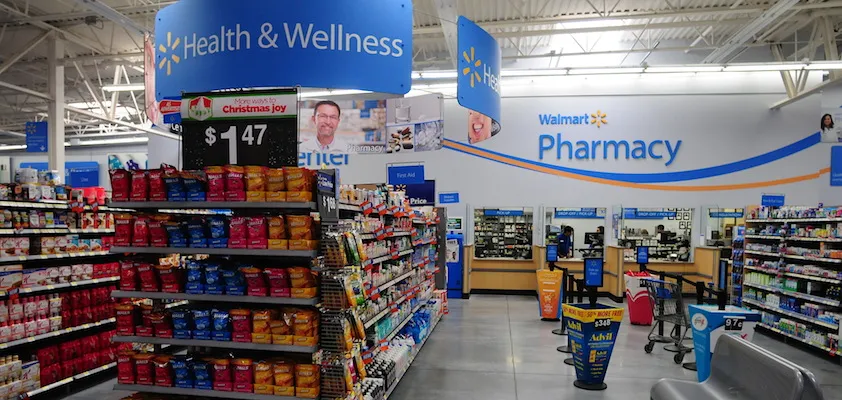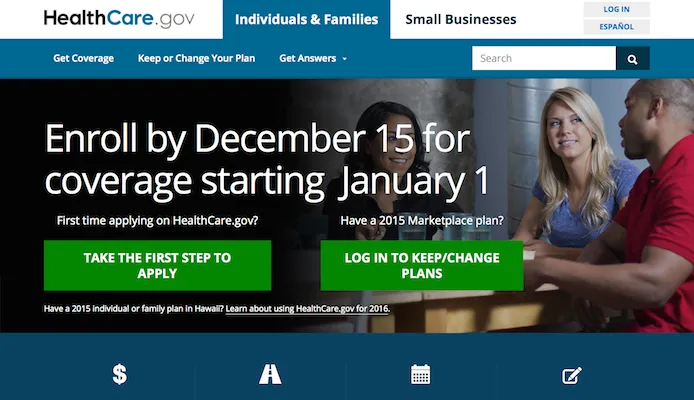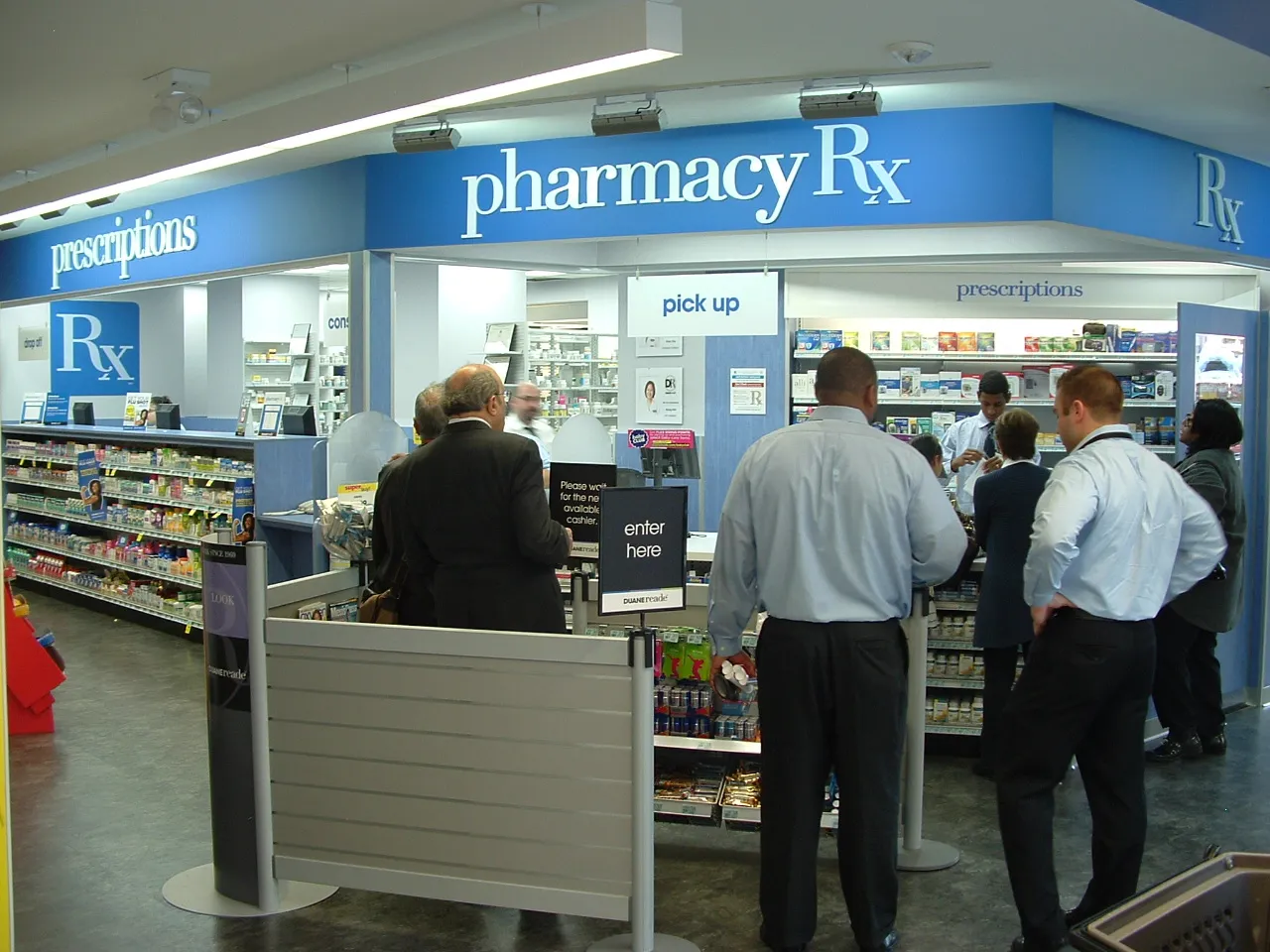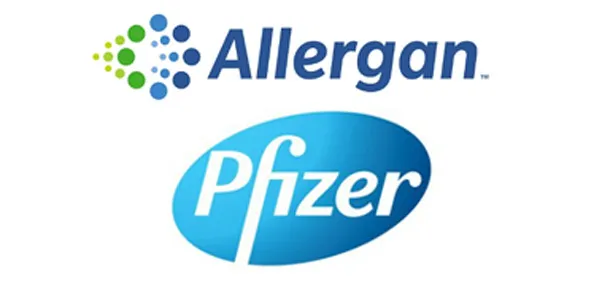In the last five years or so, chain drug stores have made huge progress ramping up their front-of-store offerings. Whether it’s fresh food, sophisticated cosmetics counters or “convenience store on steroids” types of offerings, leading chain drugstores have given shoppers many more reasons to walk in, beyond filling a prescription or picking up an over-the-counter cold remedy.
For example, previously it was unheard of to see lines at all times of day at the cash registers at the Duane Reade store on Sixth Avenue and 44th Street in Manhattan. That is, until fresh food was introduced at the front of the store. Then quite suddenly, a revamp, a face lift, and the lines are 20 or more people deep, and not just at lunchtime. The store’s vibe has completely changed. That’s music to a chain drug store’s ears.
In the meantime, while many physical stores have increased their traffic, a second battle is being waged on a different front. Competition from online pure-play pharmacies has meant that chain drug stores have also had to ramp up their digital offerings. Again, much has happened on this virtual front.
Take Walgreens, for example. They have taken their new store designs and integrated digital and mobile into them to provide their customers with multichannel access to goods and services.
With the Walgreens mobile app, customers are able to “clip” digital coupons to their device, refill prescriptions by scanning the medicine label with their mobile phone’s camera, connect with a pharmacist, schedule appointments at the Healthcare Clinic, shop for items to be shipped or picked up in-store, and more.
Ultimately, it’s all about convenience and creating a flawlessly smooth customer experience.
Integrating online gift card and promotion programs
As chain drug stores get better at omnichannel, one point they should consider is integrating online gift card and promotions programs into their online platform with that same level of seamlessness.
Your first thought might be, “Why would a pharmacy need to get sophisticated about gift cards? Don’t customers simply pick them up when they have a need?” And a decade ago, you would have been right: This might not have been a priority investment before the expansion of chain drug stores into food emporiums that offer pre-made gourmet sandwiches; cosmetics sections with all the merchandising savvy and glitz of an upscale department store; and yes, gift sections, complete with greeting cards, wrapping paper and … gifts, like those little googly-eyed stuffed animals.
Gift cards are an appropriate complement to these newer offerings. They provide an additional income stream and, moreover, there are several ways to improve their performance both online and in the physical store.
While the e-gift card offers unlimited options and great convenience, there will always be a contingent of shoppers who want to buy a physical card to give. And much has changed in this world.
Remember when gift cards were called gift certificates? They were usually handwritten to a particular recipient by a particular giver, and they stood in place of a service (massage, spa treatment, etc.) or credit at a favorite restaurant toward a meal.
Things have developed a great deal, starting with gift card trackability and ubiquity. Chain drug stores and other retailers can now use the data from gift card transactions to better understand their customers.
And today gift cards can be given in any and every circumstance — not only as a last-ditch effort at 11th-hour holiday shopping but in hundreds of more everyday, thoughtful contexts.
Consider these scenarios: Birthday (that’s a no-brainer). Thank you. Housewarming. Sympathy. Or how about these more out-of-the box uses: Help someone to fill a prescription, in a tactful and unobtrusive way. Buy your hard-working staff (remember those ready-made gourmet sandwiches?) lunch for a week to show your appreciation and keep them motivated.
And now consider how the digital, online component of this type of mission-specific giving renders the whole process so much more convenient, instantaneous, discreet and delightfully varied for both the customer-as-giver and the customer-as-receiver.
Optimizing in-store initiatives
There’s a host of in-store-specific possibilities for design, merchandising and promotions of gift cards, and we have a number of guidelines for this. Here are a few that come to mind topmost.
Recall Henry Ford’s famous quote, “People can have the Model T in any color — so long as it’s black.” Counter to the legendary car maker’s quip, our first recommendation is to offer multiple card designs. This is easily achieved and does wonders for improving sales.
With a wide choice of design, the purchaser can create a more personal gifting experience. Along these same lines, change out your card designs on a regular basis. People tend to stay loyal to the same brand, but they don’t want to look like they are giving last year’s card.
We’ve also found that card designs using customized design features — such as metallic or foil printing — can sell at a rate 10% faster and have a higher average load rate than a standard four-color gift card. When premium card designs are introduced, we’ve seen increases of 3% to 5%.
When a customer buys a gift card, put it in a special box, envelope or bag. More than half of the thousands of consumers we’ve spoken with reported they prefer to buy gift cards when special packaging is offered. A special presentation can make a huge difference in how the card is perceived — coordinated packaging and materials make the gift card look that much more special and thoughtful.
Getting online right
Your online offering calls for that same level of variety and customization. The inherent digitized property of e-gift cards makes them the ideal offering as drug stores ramp up on their digital strategies, because they can be used in both consumer-facing contexts — in combination with promotions, for example — and in-house decision making, as they hold the big data capability to aggregate and narrate information on customers’ needs, wants and preferences.
But that can get tricky, particularly when the goal is to achieve a high degree of seamlessness in the transaction and delivery. That’s the part that drug stores have to get right, on their websites and in the entire end-to-end process.
In the same way that in the physical store merchandising, fixturing, placement of the displays, marketing, graphics, imagery and promotions all have to come together, something very similar has to be achieved in the online experience, from the emailed notification of the gift card all the way to seamlessly processing the transaction and tracking the data.
When a gift card is bought on a website, the retailer needs the tools to do all of the virtual merchandising and fixturing, custom designs and banner ads (even loading up video) ith a high degree of customization and personalization, an elegant customer interface and a dedicated gift card engine so that no matter how the card is used (whether scanned or swiped) everything from processing the payment to how the data on the transaction is managed and reported happens seamlessly as one integrated, connected-up event.
This means that regardless of the channel, there needs to be an easy and graceful way to navigate across what could be a highly disjointed process that goes between multiple vendors, each managing a different channel. That can lead to poor web page setups and counterintuitive “continue” setups, with the customer being required to click multiple times.
In the spirit of the Walgreens example above, it’s all about meeting consumer expectations, and how to make that happen whether they’re in the store or on a tablet, on their mobile phone or a PC — and being able to smoothly tie together all those channels and devices.
The overall experience should be streamlined and friction-free: No matter what technical complexity exists behind the scenes, it should feel like a simple transaction that instills confidence in the user.
Online gift card capabilities are fast-moving and constantly improving, so as chain drug stores are working on their overall digital offerings, it makes strategic sense to make this goal a part of the overall initiative.
Fold digital gift cards and promotional offerings into your website right up front. You can accept payment for the cards online, allow your customers to use them online, and also integrate them with mobile apps as well as in-store use. The online and mobile components of merchandising, of course, are on all chain drug retailers’ minds as they move seriously toward building more complete e-commerce capabilities.
While we’re at it, why shouldn’t the physical cards purchased in-store be usable — seamlessly — online or on a customer’s mobile phone? And why shouldn’t the retailer be able to double back on the customer’s purchase by running promotions that influence customer behavior — to shop at certain “dead” times, for example, or for certain items, or even just to come and shop in the store … or to try the online feature?
Smartly using promotions in combination with gift cards is a way to give the giver something back, for him or herself. It’s a win-win.
The bottom line
So in sum, it’s a perfect time for chain drug retailers to think about refining their gift card and promotions program — or if you have one in place, to digitize it so customers can use it seamlessly online, in-store and on their mobile devices.
The technology and back-end functions have all been worked out. Your design and merchandising creativity can be put to great use in keeping it fresh for your customers. And in the process, you’ll be learning more about the customer through the data these instruments will give you access to.
When integrated with your e-commerce offerings, gift cards can be the gift that keeps on giving.
Mark Schatz is executive managing director and senior vice president of Louisville, Ky.-based Stored Value Solutions, and can be reached at mschatz@storedvalue.com. Jenny Parris is vice president of global marketing and product at Stored Value Solutions. She can be reached at jparris@storedvalue.com.








